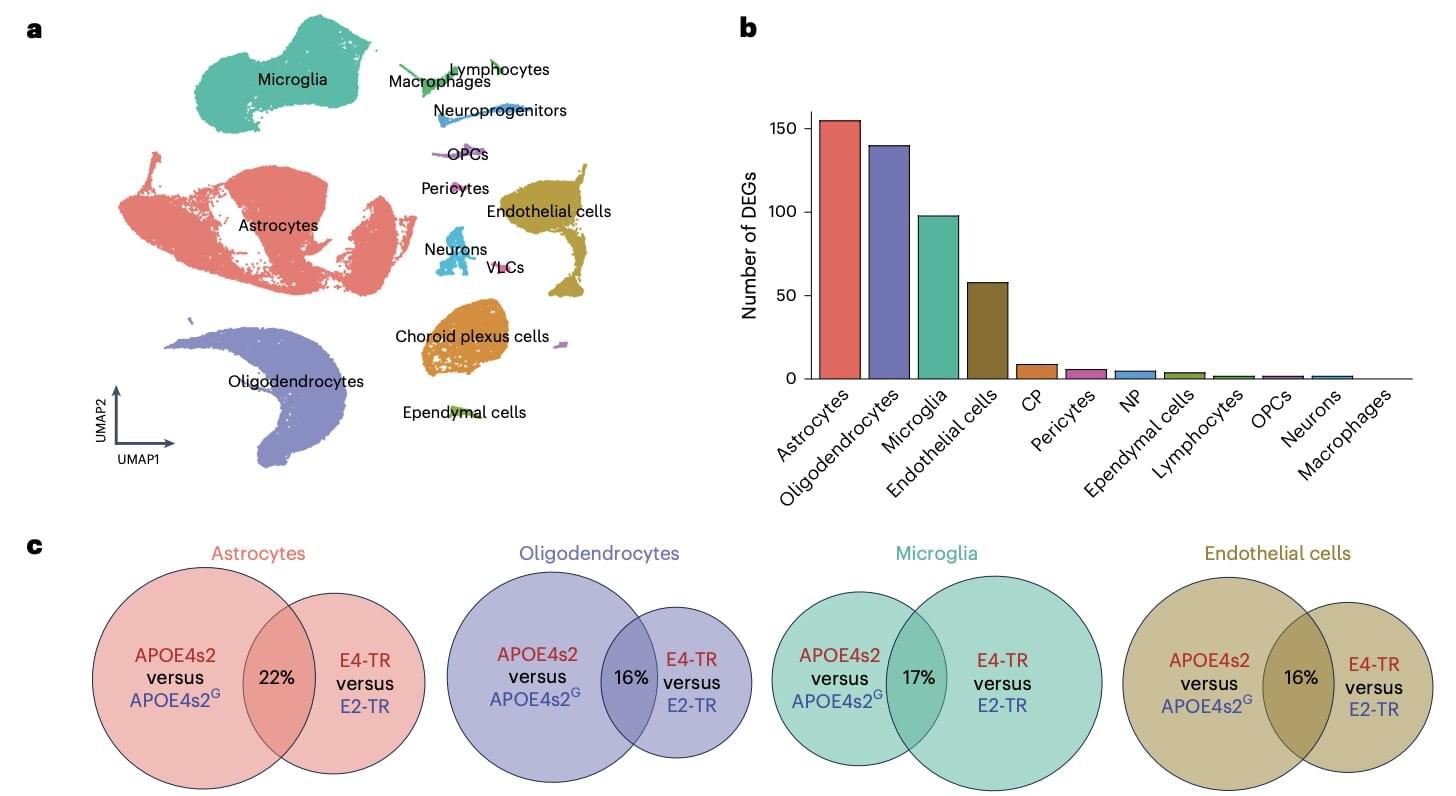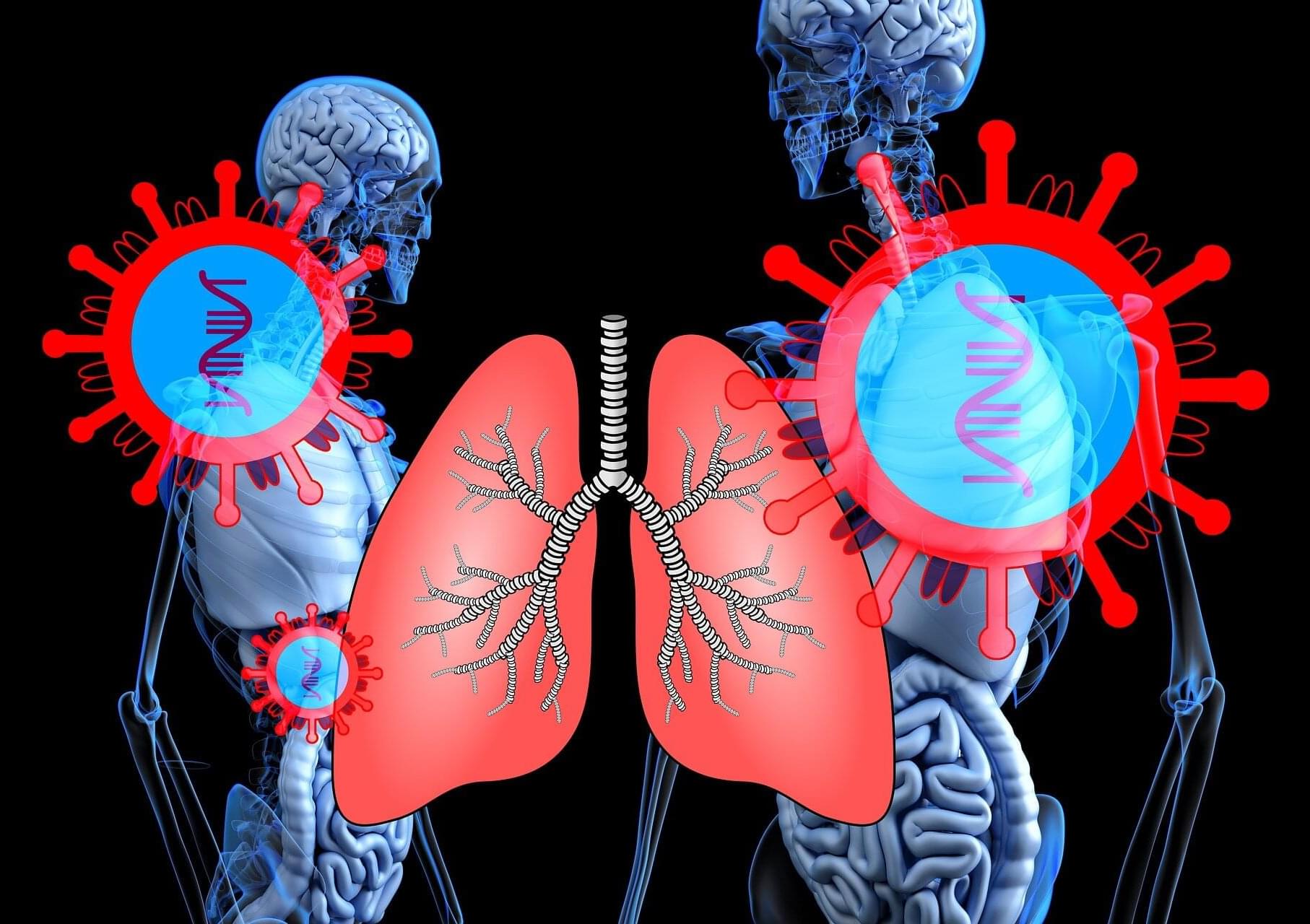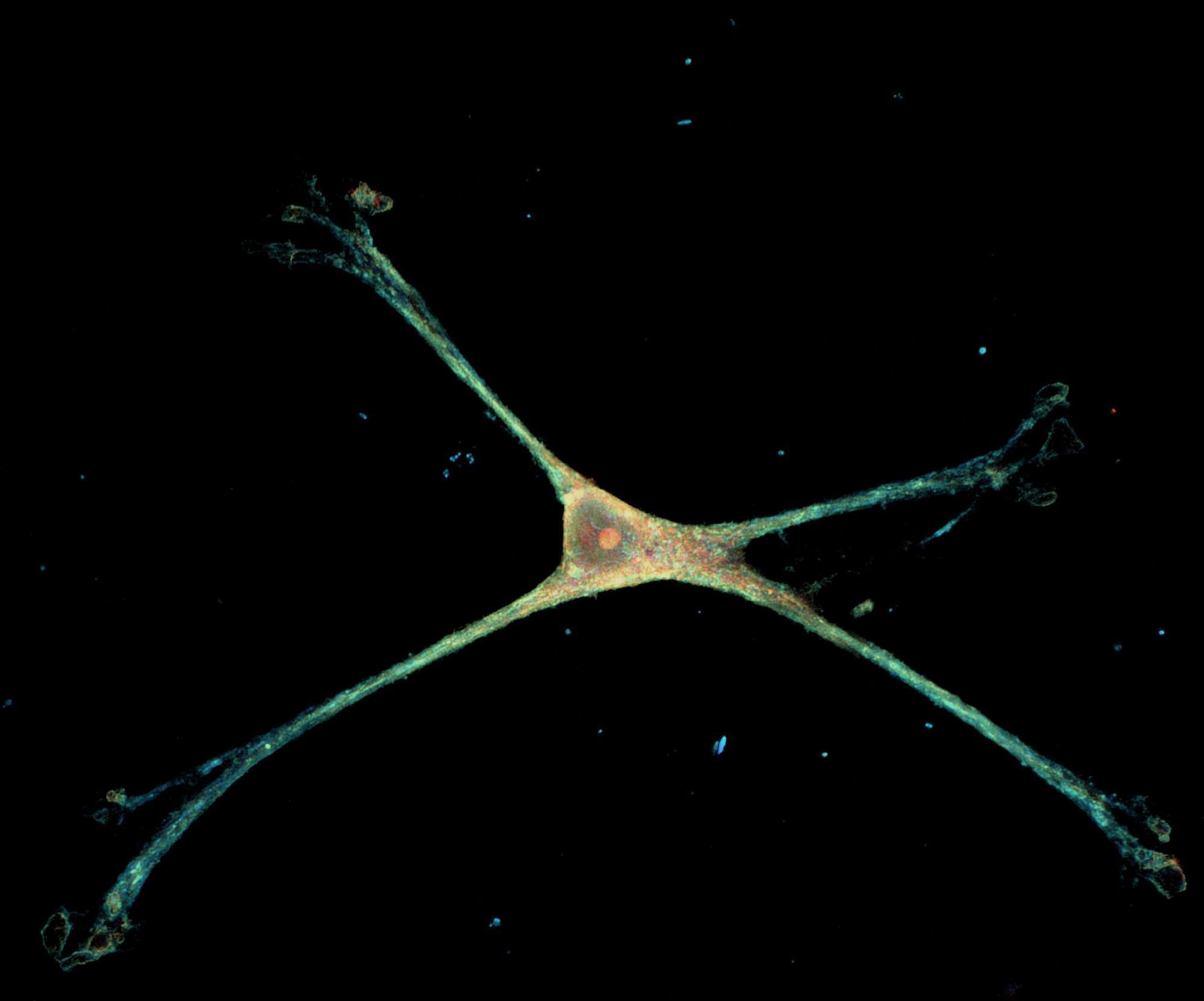Year 2014 face_with_colon_three
A microfluidic cell copies some basic functions of life.


Alzheimer’s disease (AD) is a neurodegenerative disorder characterized by the progressive degradation of brain cells, as well as an associated decline in memory and other mental functions. Earlier research found that different forms (i.e., alleles) of a gene known as apolipoprotein E (APOE) are associated with an increased or decreased risk of developing AD.
The APOE gene can be mutated into different variants (i.e., alleles), including APOE2, APOE3 and APOE4. Past studies have linked the presence of two APOE4 alleles to a higher risk of developing AD, while two APOE2 alleles were linked to a significantly lower risk of AD.
Researchers at the University of Kentucky and other institutes genetically engineered a type of mouse that carries a genetic “switch” that can be activated with a drug and that converts the harmful APOE4 allele into the protective APOE2 allele.

Since humanity’s first steps on the moon, the aspiration to extend human civilization beyond Earth has been a central objective of international space agencies, targeting long-term extraterrestrial habitation. Among the celestial bodies within reach, Mars is considered our next home.
The red planet, with its stark landscapes and tantalizing similarities to Earth, beckons as the frontier of human exploration and settlement. But establishing a permanent foothold on Mars remains one of humanity’s boldest dreams and the most formidable scientific and engineering challenge.
The red planet, once draped in a thick atmosphere, has undergone dramatic transformation over billions of years. Its protective blanket vanished, leaving behind an environment nearly unrecognizable to terrestrial life.
Dr. Michael Levin explores goals as drivers of expanding intelligence at the 6th Woodenfish conference on Buddhism, Bioengineering and Biological Science.

A team of scientists have developed a simple method for automated manufacturing of lung organoids which could revolutionize the development of treatments for lung disease. These organoids, miniature structures containing the cells that real lungs do, could be used to test early-stage experimental drugs more effectively, without needing to use animal material.
In the future, patients could even have personalized organoids grown from their own tissue to try out potential treatments in advance.
“The best result for now—quite simply—is that it works,” said Professor Diana Klein of University of Duisburg-Essen, first author of the article in Frontiers in Bioengineering and Biotechnology.
Genetic engineering and human enhancement are no longer science fiction — they’re here right now. In this episode of Longevity Science News, we explore the rise of gene therapy, anti-aging biotechnology, and the first wave of GMO Humans using real genetic enhancements to increase muscle, extend telomeres, boost IQ, and slow biological aging.
If you’re interested in longevity, life extension, biohacking, genetic modification, or cutting-edge anti-aging research, this video breaks down everything you need to know about the future of human evolution — and the people already jumping in.
HUME BODY ANALYZER:
Use Code: LONGEVITY for up to 50% OFF
https://humehealth.com//discount/LONG… FEATURED: BioViva Keynote by Liz Parrish Watch the full keynote here: • The First Person to Take Gene Therapy for… This talk covers viral vectors, telomere extension, muscle-growth gene therapies, cognitive enhancement, dementia treatment, and the global expansion of experimental genetic clinics. Chapters: 00:00 – Cold Open — FDA Gene Cures 00:35 – Liz Parrish & BioViva 01:35 – Sebastian A. Brunemeier 02:48 – HUME Body Pod 03:55 – Currently Available Genetic Cures 04:48 – How To Get Access 08:00 – Safety & Pricing 08:22 – Right to Try Debate 09:20 – Follistatin Results 10:50 – Telomere Extension 11:50 – Klotho & IQ Boost 13:26 – IQ & Society 14:35 – Dementia Gene Therapy 15:40 – Custom Therapies 16:20 – Conclusion • FDA-approved genetic cures • BioViva’s gene enhancement results • Follistatin gene therapy for muscle growth • Telomerase (TERT) for biological age reversal • Klotho gene therapy for cognitive enhancement • Dementia gene therapy case studies • Medical tourism for experimental gene treatments • How to access unapproved gene therapies • AI’s role in designing next-gen genetic interventions • Personalized & bespoke gene therapies • Ethical questions about enhancing IQ, strength, and lifespan • The future of human evolution & GMO humans 👤 EXPERTS & SOURCES FEATURED Liz Parrish — BioViva Sciences LinkedIn:
/ lizlparrish Sebastian Brunemeier — Cambrian Bio / Long Game Ventures LinkedIn:
/ sebastianlongbio Long Game Ventures:
/ longgame-vc Wired Magazine — Medical Tourism & Gene Therapy Pricing https://www.wired.com/story/bioviva-g… Extended Interview: Montana Senator Ken Bogner
• Ken Bogner Full Interview 🔗 FULL INTERVIEWS & BONUS CONTENT Get extended conversations, deep dives, and behind-the-scenes research on Patreon: 👉
/ u29506604 💬 JOIN THE DISCUSSION Would you use gene therapy to slow aging? Would you enhance your muscle, intelligence, or longevity? Do you think we should expand access to experimental anti-aging treatments? Let me know in the comments. 🧪 Longevity Science News PRODUCTION CREDITS ⎺⎺⎺⎺⎺⎺⎺⎺⎺⎺⎺⎺⎺⎺⎺⎺⎺⎺⎺⎺ Executive Producer – Keith Comito @Retromancers Host, Producer, Writer – @emmettshort
🔬 FEATURED: BioViva Keynote by Liz Parrish.
Watch the full keynote here:
• The First Person to Take Gene Therapy for…
This talk covers viral vectors, telomere extension, muscle-growth gene therapies, cognitive enhancement, dementia treatment, and the global expansion of experimental genetic clinics.
Chapters:

The SARS-CoV-2 (severe acute respiratory syndrome coronavirus responsible for the COVID-19 disease) uses the Spike proteins of its envelope for infecting target cells expressing on the membrane the angiotensin converting enzyme 2 (ACE2) enzyme that acts as a receptor. To control the pandemic, genetically engineered vaccines have been designed for inducing neutralizing antibodies against the Spike proteins. These vaccines do not act like traditional protein-based vaccines, as they deliver the message in the form of mRNA or DNA to host cells that then produce and expose the Spike protein on the membrane (from which it can be shed in soluble form) to alert the immune system. Mass vaccination has brought to light various adverse effects associated with these genetically based vaccines, mainly affecting the circulatory and cardiovascular system.

Scientists have engineered a nanowire platform that mimics brain tissue to study astrocytes, the star-shaped cells critical for brain health, for the first time in their natural state.
Astrocytes are the brain’s most abundant and mysterious cells, responsible for regulating communication between neurons and helping to maintain the blood-brain barrier. They are also highly dynamic shape-shifters, something they do not do on typical petri dishes, leaving major gaps in our understanding of how they operate.
“Frustratingly, little is known about the stunning diversity of astrocyte morphology and we also don’t know much about the molecular machinery behind these shape shifts,” said co-senior author Ishan Barman, a Johns Hopkins University bioengineer. “They won’t take on these shapes on glass, so the question for us was how do we replicate the in vivo shape but in vitro?”

